
|
JAPANESE PRINTS A MILLION QUESTIONS TWO MILLION MYSTERIES |
Ukiyo-e Prints浮世絵版画 |
|
Port Townsend, Washington |
|
A CLICKABLE INDEX/GLOSSARY (Hopefully this will be an ever changing and growing list.)
Kesa thru Kuruma |
|
|
The bird on the walnut shell is being used to mark additions made in July 2008. The gold koban coin on a blue ground was used in June. The red on white kiku mon in May. |
|
|
|
TERMS FOUND ON THIS PAGE:
Kesa, Roger Keyes, Kihada, Kikkō, Kiku, Kikyō, Kikugawa Eizan, Kimedashi, Kine, Kingyo, Kiri, Kiri seal, Kiseru, Kitsune, Kitsunebi, Kitsune ken, Kiwame, Koban and the Kodansha Encyclopedia of Japan
袈裟, 黄檗, 亀甲, 菊, 桔梗, 菊川英山, 杵, 金魚, 桐, 桐紋. 煙管, 狐, 狐火, 狐拳, 極め, 小判 and the 講談社日本百科事典
けさ, きはだ, きっこう, きく, ききょう, きくがわ.えいざん, きめだし, きね, きんぎょ, きらずり,
きり, きりもん, きせる, きつね, きつねび,
きつねけん, きわめ and こばん |
|
|
TERM/NAME |
KANJI/KANA |
DESCRIPTION/ DEFINITION/ CATEGORY Click on the yellow numbers to go to linked pages. |
|
Kesa |
袈裟
けさ |
A Buddhist priest's or monk's robe.
|
|
Traditionally made from a patchwork of scraps of inexpensive cloth modeled on a golden kesa made for Shakyamuni (just Shaka in Japanese 釈迦 or しゃか), the historical Buddha (ca. 563-483 BCE), by his mother. At the time of his death one of his disciples took the kesa to a mountain retreat to await the coming of Maitreya or the Buddha of the Future. [The Maitreya is called Miroku in Japanese (弥勒 or みろく).]
These robes were made of donated pieces of cloth and frequently handed down from priest to priest as symbols of religious power and lineage. In time the robes became finer because better and better scraps were being donated.
Somewhat like a toga the kesa was worn "...diagonally covering the right shoulder and passing under the left armpit."
Quote from: Dictionary of Japanese Culture by Setsuko Kojima and Gene A. Crane, p. 166.
These robes were often worn by komusō. (See that entry.) To the left is a detail from a Hiroshige print of two mendicant monks wearing kesa. |
||
|
|
||
|
Keyes, Roger |
|
Expert on Japanese prints, author of many books and articles. 1 |
|
Kihada |
黄檗
きはだ
|
A rich, creamy yellow colorant obtained from the inner bark of the Phellodendron amurense or Amur corktree. (Phellos is Greek for cork and dendron means tree.) A member of the Rutaceae or citrus family.
The image of the bark to the left is used courtesy of Shu Suehiro at http://www.botanic.jp/index.htm. |
|
"The thick trunk of Amur Corktree, while having a relatively smooth bark in youth, develops a deeply furrowed, ridged, and cork-textured bark with maturity, hence the common name."
Quoted from an Ohio State University web site on plants.
At a Virginia Tech web site there is a photograph of a piece of the bark showing the inner layers being held in the palm of a hand. The yellow color is startlingly strong in contrast to the pink of the person's flesh. Another site describes the yellow as 'neon'. It is clear from this image why the Japanese would have chosen it as a yellow dye. Now I wonder what process they had to put it through to extract the color and make it usable. Was it labor intensive or easy? The brilliance of the yellow would make it seem easy, but I don't know.
All of the web sites I have visited have noted that this tree is virtually pest free.
The cell color shown here is kihada yellow.
Don't forget that color descriptions are not exact. As there are many shades of green or blue for example, there are many slight variations within each of the colors shown here which may or may not conform precisely to your own perceptions of what they should be. |
||
|
|
||
|
Kikkō |
亀甲
きっこう |
Tortoise shell motif used as a crest or mon. This is a basic hexagon shape which is often combined with other motifs generally encapsulated within each segment. |
|
Kiku |
菊
きく
|
"The 16-petalled chrysanthemum is used as the crest of the Imperial Family of Japan, and the kiku is often called the national flower of the country. But the chrysanthemum was formally adopted as the Imperial crest only since the beginning of the Meiji era." However, the court had been using this flower as a decorative motif since as early as the 12th century.
There is a tale that in ancient China one of the favorites of the emperor was exiled because of an inadvertent transgression. Before he left the emperor told him to recite a specific Buddhist chant over and over after he leaves. "Living in the secluded mountain of Li-hsien, Tzu Tung faithfully repeated the passage every day. One morning he wrote the sacred words on a chrysanthemum leaf as he stood by a stream. The morning dew that collected on the lettered leaf fell into the water, and then a sudden change took place. The water became a sacred medicine to prolong life. Before the young man appeared a paradise of singing birds and fragrant blossoms, and angels came to wait upon him. With joy he drank the water of the stream, and lived for 800 years. All people living along the lower flow of he stream prospered and lived almost indefinitely."
Source and quote from: Mock Joya's Things Japanese, pp. 353-4.
Merrily Baird in her Symbols of Japan: Thematic Motifs in Art and Design (p. 75) notes a noh version of this theme, but here it is the petals that are painted with Buddhist characters.
She also says that there are at least 95 different variations on the chrysanthemum crest or mon. To the left are just two of them.
Personal note: All of the coloring applied to any crests or mons is my choice. If I have crossed any cultural taboo lines then I apologize. But if I have done so it is totally out of ignorance and not even with a sliver of maliciousness. |
|
Kikyō |
桔梗
ききょう
|
Chinese bellflower motif: John W. Dower notes that this "...is a five-petal, indigo flower which blooms in August and is known as one of the 'seven plants of autumn.' " Originally a wild flower that was eventually domesticated and grown in gardens. It was first worn as a warrior crest or mon in the 13th century because of its beauty. There are many diverse variations on this motif.
Source: The Elements of Japanese Design, by John W. Dower, p. 48.
Kikyō can also be found under the term rindō (竜胆 or りんどう). Dower noted that "...the bellflower is one of the Japanese design motifs most adaptable to variation." The two bottom examples don't even begin to show the breadth of differences between the various bellflower motifs. Some of them are hardly recognizable as such.
|
|
Kikugawa Eizan |
菊川英山 きくがわ.えいざん |
Artist 1787-1867 1 |
|
Kimedashi |
きめだし |
Embossing around printed areas using uninked blocks. |
|
Kine |
杵
きね |
The pestle motif which was used as a family crest or mon. The pestle is associated with the pounding of mochi, a sticky rice cake made especially for New Year's. It has an extremely powerful religious symbolism to the Japanese. Also it is associated with the Japanese belief that the moon is the home of a large rabbit (or hare) pounding mochi.
It is my speculation, but it would seem that the pestle could easily be considered an instrument of strength and hence a potent symbol of power.
I have an admission to make: I made a mistake. The image to the left is a replacement for one I put there earlier. The first one was actually a pair of crossed tsuzumi, i.e., drums. If you go to that entry you will see the reason for my confusion. Just compare this new one with that one. |
|
Kingyo |
金魚
きんぎょ
|
Goldfish: I am a sucker for etymologies. So, although the term 'goldfish' is obvious I though I might be able to find a little more history about it by looking in the Oxford English Dictionary. I was wrong. It didn't give any. However, other sources did somewhat. But all of that is moot considering that the kanji character 金 means gold and 魚 means fish. It is a literal borrowing. Not from the Japanese, but from the Chinese.
"It is presumed to be around the 11th century that goldfish breeding was conducted actively in China, and goldfish seem to have been imported to Japan on several occasions during the 16th and the 17th centuries." There was a 'goldfish boom' during the Genroku period (1688-1704). Later during the Bunka and Bunsei eras (1804-30) ukiyo artists used them as a creative motif."
Source and quote: Kodansha Encyclopedia of Japan, vol. 3, entry by Saitō Shōji, p. 43.
"The practice of scooping for goldfish at temples and shrines on special days on special days and summer evenings began during the Meiji era."
Quoted from: Japanese Tradition in Color & Form [Pastimes]. Graphic-sha Publishing Company, Ltd., 1992, p. 121. |
|
Kirazuri |
雲母摺
きらずり |
"...mica printing to obtain a silver tone in the print."
Quote from: Japanese Print-Making: A Handbook of Traditional & Modern Techniques, by Toshi Yoshida & Rei Yuki, Charles E. Tuttle Company, 1966, p. 168.
The example to the left is from a Kuniyoshi print which we have already sold. It shows a subtle use of such highlighting. Click on the number one in the column to the right to see the full print. 1 |
|
Rebecca Salter in her Japanese Woodblock Printing published by the University of Hawaii in 2001 (p. 112) states that the prints of Sharaku best illustrate the use of mica. "Mica was used because silver was too expensive and in many ways it was better because it did not discolour as easily. The background was often printed in a dark grey before being overprinted with nori or nikawa and sprinkled. Excess mica is lightly shaken off, the print allowed to dry completely and then brushed gently.
The same technique can be used for gold, silver or bronze powder. If the mica or powders are mixed with nori/nikawa and/or pigment and printed directly they lose a lot of their sparkle.
In some prints the mica printed area was crumpled (momigami) and then flattened out again by re-sizing the back of the print and pressing flat with a baren. The effect was rather like the crazing in an old Chinese ceramic glaze." [This last technique mentioned is one that absolutely drives me crazy - in a good sort of way.]
See our entry on mica or unbo on U thru Yakata-bune index/glossary page. |
||
|
|
||
|
Kiri |
桐
きり
|
The kiri tree (Paulownia tomentosa) in the West is known as the paulownia. Large purple flowers bloom in the early spring before the leaves even appear. The effect is quite dramatic. However, to the researcher as opposed to the casual viewer it is its nomenclature which is most surprising. When the Swede Karl Thunberg visited Japan he named it Bignonia tomentosa in 1783. (Its winged seeds, opposite leaves and large showy flowers led Thunberg to put it in that genus.)
In 1835 Siebold and Zuccharini named it the Paulownia imperialis after the Queen of the Netherlands.* Endlicher moved it in 1839 to the Scrophulariaceai family because the seed pod contained an endosperm. Now even that attribution is in dispute. Some botanists seem to think it lies somewhere between the two genera.
*Anna Paulovna Romanov (1795-1865), daughter of Tsar Paul I and granddaughter of Catherine the Great, married the future Willem II of the House of Orange in 1816. She was Queen of the Netherlands from 1840 to 49.
William A. Lincoln in his World Woods in Color (Linden Publishing Co., Inc., 1986, p. 143) "It has a fine straight grain and smooth even texture. "Weak in all strength properties, which are unimportant in the uses to which it is best suited." "Kiri is highly valued in Japan for a wide range of uses including cabinet and drawer linings, musical instruments, clogs, floats for fishing nets, and for peeling into exceptionally thin 'scale veneers', mountedon paper and printed to produce special visiting cards..." In the Kodansha Encyclopedia of Japan (vol. 6, entry by Matsuda Osamu, p. 166) notes: "The tree has a wide variety of other uses as well: the wood is burned to make charcoal for sketching and powder for fireworks, the bark is made into a dye, and the leaves are used in vermicide preparartions". |
|
In 1888 the Meiji Emperor established the Grand Cordon of the Order of the Rising Sun, Palownia Flowers (勲一等旭日桐花大綬章) which is only given to men of the highest rank such as admirals, generals, diplomats, jurists and politicians. It has even been bestowed on foreigners. General Douglas MacArthur (マッカーサー) received it in 1960 and later Mike Mansfield who acted as the American ambassador to Japan from 1977-88.
This entire entry originated from my rereading of "The Tale of Genji". The first chapter is Kiritsubo (桐壺 or きりつぼ). Royall Tyler (ロイヤル・タイラー) in 2001 translates this as "The Paulownia Pavilion", Seidensticker in 1975 as "The Paulownia Court", Suematsu Kenchō (末松謙澄 or すえまつけんちょう) in 1882 as "The Chamber of Kiri" while Waley (ウェーリー 1925) and McCullough (1994) just call it "Kiritsubo".
The images to the left have been generously provided by Sue Shuehiro. Please visit his extensive botanical site at http://www.botanic.jp/index.htm. Compare the shape of the large leaf at the bottom and the cluster of flowers above with the kirimon featured in the section below. There is also additional information there about this greatly revered tree. |
||
|
|
||
|
Kiri seal |
桐紋
きりもん
|
The paulownia, i.e., kiri was the most popular of Japanese crest motifs. "According to Chinese legend, the mythical phoenix... alights only in the branches of the paulownia tree when it comes to earth and eats only the seed of the bamboo."
"As an explicitly imperial crest, the paulownia ranks only slightly behind the chrysanthemum, and both are usually taken as the dual emblems of the Japanese throne." In the early 13th century the emperor Godaigo (後醍醐 or ごだいご) bestowed both crests upon the head of the Ashikaga (足利 or あしかが) clan. With that the bestowing of the paulownia motif was also an Ashikaga prerogative which they used to reward loyalty. The recipient clans wore it as a symbol of "legitimacy and power." In the 16th century, Hideyoshi (秀吉 or ひでよし), who was born a commoner, after adopting it as his own crest also gave out the motif to some of his most loyal supporters. By the late feudal period nearly 20% of the warrior class wore it as their own personal crest.
Source and quotes from: The Elements of Japanese Design, by John W. Dower, pp. 68-9.
Farmers once planted kiri trees upon the birth of a daughter because it was so fast growing that by the time she was ready to marry the tree could be cut down and made into a tansu (箪笥 or たんす)or chest.
|
|
"The name kiri came from the kiru (to cut) [切る or きる]as it was believed that the tree would grow better and quicker when it was cut down often." It can grow to more than 30' in height and has fragrant purplish blossoms in April or May.
Source and quote from: Mock Joya's Things Japanese, pp. 358-9.
The image to the left on the bottom is the seal used predominantly by Kuniyoshi. It is important to note that he did not always use it and that certain students of his also used it occasionally too. 1 |
||
|
|
||
|
Kiseru |
煙管
きせる |
Naturally the habit of smoking (tobacco) was introduced into Japan by the Europeans in the 16th century. One familiar with the pipes used can't help but notice that the bowls are extremely small allowing for only a 'hit' or two before being emptied of ash and being refilled. A lot of my contemporaries have commented how much the bowl looks like the ones used for hash pipes. (That's right - hash pipes.) However, scholars are convinced that the bowls were originally designed like this because of the strength of the tobacco being imported. Besides, it would probably save quite a bit of expense if the tobacco was consumed in smaller quantities.
According to Mock Joya the longer more elaborate pipes - up to three feet long -were generally used by women and then only indoors. Click on the number 1 to the right and notice that it is a man holding the pipe and not only that but he is represented as being outdoors.
Source and quote from: Mock Joya's Things Japanese, pp. 267.
The bowl of the pipe is called a gankubi (雁首 or がんくび), the stem is the rao (羅宇 or らう) and the mouthpiece is a suikuchi (吸い口 or すいくち).
The image to the left is a detail from a diptych by Toyokuni III. The actor holding the pipe is playing a character who was born ages before the introduction of tobacco into Japan. Hence, the pipe is an anachronism. 1 |
|
Kitsune |
狐
きつね
|
Fox
The middle image to the left is a detail of a print by Koson, aka Shoson, from the first decade of the 20th c. The image below that one is probably from the early 1960s and is by Inagaki Toshijirō (稲垣稔次郎 or いながき.としじろう - 1902-63), aka Nenjirō Inagaki. This print was sent to us courtesy of E. one of our great contributors. Thanks E! Both prints show the whimsy with which the Japanese treated the mischievous fox.
Recently a correspondent in Maine who we will call D. wrote and included several images of deer and foxes which he had taken in his own back yard. A couple of them were particularly good and it was difficult to choose, but I finally decided to post the one below. Although I am sure all of you know what a fox looks like I still think it is a good thing to be able to see a photographic representation next to those created by artists. True it is a Maine fox and not one from Japan, but beggar's can't be choosers. Thanks D!
|
|
There are foxes and there are foxes. Scientifically speaking there are various types of foxes.* The same is true of myths and folklore when dealing with this animal. U. A. Casal in his article "The Goblin Fox and Badger and Other Witch Animals of Japan" published in volume 18 of Folklore Studies in 1959 discusses several of these. "Savants tell us that there are a good many varieties of foxes, good, bad and indifferent. The common fox, kitsune, or field-fox, yako [やこ], hardly counts in lore, although it is of course not easy to know whether the animal in question is a simple yako or one of its more moody peers. Like the white foxes, the black ones, genko [げんこ], are friendly, and their appearance of a good omen. A red shakko [しゃ こ] is still fair, but the "field-shield" yakan is highly harmful. The air-fox kūko [くうこ] and the celestial-fox tenko [てんこ] are probably rather tengu of sorts, goblins that can fly through the air and of which it is best to beware, since the entire tengu-tribe can be very nasty. The ktūko and tenko seem rather Chinese conceptions, of no folkloristic importance in Japan..." (p. 3) There are also spectral foxes: "Written references to goblin-foxes does not seem to exist before the very early 11th century, in the well-known Genji Monogatari; a somewhat more definite reference to this type of magic foxes - some demoniacally powerful reiko [れいこ], ghost-fox, or some almost as dangerous koryō, haunting-fox - appears in a slightly later story-book, the Uji-shūi Monogatari, also of the 11th century." (pp. 1-2) Casal argues that such superstitions were imported into Japan because 1) he found no earlier native references and 2) the Chinese already held such views a thousand years before they appeared in Japanese literature.
In 1959 Casal wrote: "The Ainu, too, dislike the fox and avoid him as much as possible. This notwithstanding, the fox-skull with them is a fetish, set up on sacred posts outside their house to protect them from evil spirits." (p. 4)
However, in 1999 in a catalogue devoted to the Ainu put on by the Smithsonian it states: "Fox spirits are a matter of dispute among different Ainu groups, with some believing them to be helpful spirits while others see them as evil. Nevertheless, their skulls were often used as guardian spirits while others see them as evil. Nevertheless, their skulls were often used as guardian spirits for fishing, hunting, and daily life, and they were also used for fortune-telling. Whether it was believed that the spirits remained in skulls used for this purpose is ambiguous: theoretically, if they had been through a sending ceremony, they should have lost their active power; to be a guardian deity, its spirit must exist. Ethnography has not yet provided answers to such questions."
Quoted from: Ainu: Spirit of a Northern People, edited by Wm. W. Fitzhugh and Chisato O. Dubreuil, entry by Shigeki Akino, Smithosonian Institution and University of Washington, 1999, p. 252.
Casal tells the Ainu legend of the good and bad spirits getting together to decide which are going to rule the world. They finally fix on a scheme: The first spirit to see the sun rise will win for its side. The fox was considered one of the benevolent spirits. They all lined up looking east toward the horizon while the fox turned its back and looked westward. "The others of course poked fun at him; yet it was the Fox-god who first exclaimed: "I see the sun!" And indeed, when the others turned around, there was the brilliant sunshine reflected from a high peak in the West!" (p. 4)
In the first footnote in his article Casal notes that "The Chinese, but not the Japanese, nevertheless use the name "Fox" as a family-name. It has been surmised that this is due to ancient totemism."
*I claim no expertise here, but as I understand it there are four genera of foxes - Gray, bat-eared, Zorros and true foxes - made up of twenty-three species.
The fox can see into the future. It can find lost objects. Humans who are searching for such items will pray to Inari (稲荷 or いなり), the fox-deity. (Inari was also originally the harvest god.) In China there is the story of a man who urgently needed to find one document in particular from among a multitude. Frustrated the man lit incense and prayed to the fox-god for help. Closed up the room and left for awhile. When he returned he noticed that one packet of incense stood out from the others and that this pointed the way to the document he was looking for. (p. 5) Anecdotes seem to work quite well as proofs for the superstitious.
Assuming human form: "A most frequent "trick" of the fox is to take on human shape. For this he needs a skull-preferably human-and a few old bones, of horse or cow, which he places on his head and holds in his mouth. He first goes through some mysterious performances, and decks himself out with leaves and grasses. Then he faces the North-star, and "worships." His genuflexions and obeisances begin slowly and circumspectedly, but their motion gradually increases in rapidity, until finally the fox seems to perform an "Indian dance", with jumps towards the star. Yet the skull does not fall off. After a hundred acts of worship, the beast becomes able to transform himself into a masculine human being; he is now a jinko, "man fox", but if he wants to be able to turn into a young and elegantly dressed girl it is essential that he constantly live near a grave-yard..." ( p. 6) Casal notes that the Chinese add a second way for a fox to take on human form: It can do good deeds or learn 'the classics'. (p. 7) "This human disguise may be transitory or semi-permanent. But only aged and wise foxes have power to act as people for a prolonged time; incidentally, age and wisdom do not imply benevolence." But wary Japaness have ways of detecting the fox-spirit disguised as a human. In the first place, some foxes give off an inner glow most noticeable at night. This inner fire can be so bright that the hair and kimono patterns can be seen clearly at six feet. Often, too, the 'human' face is unnaturally long.
Human speech: "Another important sign: the fox, while he can learn to talk like a human in a year's time, experiences some difficulty in pronouncing certain words or sounds. It is impossible for him, for instance, to say "moshi-moshi [もしもし]" in quick succession. He just manages to say moshi once, and it sounds somewhat awkward." Casal adds: "It is in order not to be mistaken for a bakemono-fox that true humans never use moshi .only once, but always double it: moshi-moshi! Not to do so would be quite impolite, as people might become scared at the contingency of being confronted by a spook-fox..."
The fox in human form also
has another telltale give away. It has a 'faint shadow' which is the real
thing. So, "It is therefore important, when one intends to kill a
bakemono, that the thrust be not made at the human figure, but at the
vapoury fox-shape!"
The people of Izumo think that when a transformed fox knocks on their doors it is always somewhat muffled because the fox knocks with its tail and not with its knuckles. (Ibid.)
Or, if you are walking along and encounter a fox-spirit which has taken human form you can determine whether this is a fox or a real persons by pinching yourself. Do it hard! Now, if you don't feel anything then you can be sure it is a fox which has bewitched you. However, if it does hurt then you can rest easy that this is only another human. Ouch! Or, you can always carry a fried rat with you just to be safe. Foxes love fried rats. In fact, they can't resist them. Casal says: "One other efficacious way to detect a bakemono fox is to depose a fried rat on the road along which the suspicious person comes: the animal is so fond of fried rats, that he will immediately abandon his prank and pounce upon the tidbit. "
Casal continues: "But, as usual with spectres and eerie animals, not all foxes are able to bakeru, to metamorphose themselves, to assume the garb and speech of humans, to bewitch people. At least so the savants say, although the common man prefers to avoid all kinds of foxes. Those who are better versed in their doings declare that only a red, white or yellow fox can ever hope to attain this stage; and before being "safe" in doing these things, he must escape the mortal danger of thunder three times, or be at least five-hundred years old." The older the fox the wiser it is. If it reaches 800 to 1,000 years it becomes a "Celestial Fox," takes on a golden color, has 9 tails and knows the secrets of Nature.
Above is a 9 tailed fox from a famous Kuniyoshi print. This is only a detail. I asked a friend who owns the original to send me an image. He did posthaste. I did the doctoring. Thanks friend!
Foxes which live in or near graveyards are the most dangerous because they develop a symbiotic relationship with human ghosts.
A major Chinese dictionary from ca. 100 A.D. says that the fox was the vehicle ridden by ghostly beings. (p. 9) In Japan "The fox-goblin may approach a lonely house as an old man who has lost his way, as a pilgrim-monk or Buddhist priest, or as a damsel in distress - rarely in any other human form." The monk or priest disguise bodes the worst for the mortal being that encounters it. "The most dangerous transformation, people believe, is when the fox becomes a bōzu [坊主 or ぼうず], Buddhist priest. Perhaps only the very powerful beasts can adopt this saintly disguise." (p. 10)
Fox-spirits and the machine age: "The weirdest of all fox-transformation stories is, I do not doubt, one of the most modern, dating from 1889. In that year it was widely circulated and believed that a fox had taken the phantom shape of a steam-train on the Tokyo-Yokohama line!" One day an engine-driver saw another train coming directly at him on the same track. Startled he blew his whistle and kept blowing it. But soon he noticed something very odd about the other train. No matter how far the engineer-driver went the other, approaching train never got any closer. Realizing what was happening the engineer decided to speed up instead of slowing down. "And at last he caught up with the phantom-there was a slight jar and, lo and behold! a fox was found crushed under the wheels..." (p. 12) Below is a detail of a print of a train by Kiyochika from 1889. Or, is it really a fox? Who knows?
You would think that the foxes would have learned from the train episode, but no. Sometime after the introduction of the automobile into Japan it happened again. A fox-car played chicken and the fox lost. (p. 13) Will they never learn?
The image above is a doctored detail from a print on the Kuzunoha theme by Kuniyoshi. Our great contributor E. helped us by providing the complete print.
The fox can bestow the gift
of kiki-mimi (ききみみ) on a human allowing him to understand the
languages of birds and beasts. (p. 18)
"...fox-owning families are believed to have living with them a tribe of small, weasel-like foxes to the number of seventy-five, called human foxes [jinko], by whom they are escorted and protected wherever they go, and who watch over their fields and prevent outsiders from doing them any damage. Should, however, any damage be done either through malice or ignorance, the offender is at once possessed by the fox, who makes him blurt out his crime and sometimes even procures his death. So great is the popular fear of the fox-owners that anyone marrying into a fox-owning family, or buying land from them, or failing to return money borrowed from them, is considered to be a fox-owner too. The fox-owners are avoided as if they were snakes or lizards. Nevertheless, no one ever asks another point blank whether or not his family be a fox-owning family; for to do so might offend him, and the result to the inquirer might be a visitation in the form of possession by a fox. The subject is therefore never alluded to in the presence of a suspected party. All that is done is politely to avoid him." (p. 21)
Yamabushi (山伏 or やまぶし), literally 'one who lies in the mountains', were ascetic monks who were said to have magical powers. They often blew a conch shell trumpet or horagai (法螺貝 or ほらがい) "...to convoke a meeting and also to dispel evil ghosts on the road..." and to call foxes to them to be their servants. "According to the "savants", the yamabushi had several types of helpers: the kiko or spirit-fox as a general assistant in sorcery; the osaki-kitsune, whose written name means "tall-promontory", but should probably be but a 'tail-tip', of very small size; and the even smaller kanko or kuda-kitsune, the "pipe-fox", because it could be enclosed in a bamboo tube and carried in the hand by the yamabushi while on his pilgrimage! Whatever their size, these foxes, being the most powerful of all goblins, through their presence in a holy cause would then dispel and vanquish all inferior spirits." (pp. 24-25) |
||
|
|
||
|
Kitsunebi |
狐火
きつねび
|
Foxfire (St. Elmo's
Fire):
Quote from U.A. Casal, "The Goblin Fox and Badger and Other Witch Animals of Japan", Folklore Studies, vol. 18, 1959, p. 10.
|
|
Kitsune ken |
狐拳 きつねけん |
This is a rock, paper, scissors game where the loser has to drink a cup of saké or do some such thing. It can also be played like strip poker.
|
|
Timothy Clark describes an Utamaro print from ca. 1793-4: "Three tea-house beauties of the day are playing the party game 'catch the fox' (kitsune ken), with the forfeit that the loser has to drink some saké. In 'catch the fox', three contestants face one another and compete making gestures simultaneously to represent one of three types: a hunter with a rifle, a squire and a fox. The hunter beats the fox, the squire beats the hunter and the fox beats the squire..."
Quoted from: The Passionate Art of Kitagawa Utamaro, published by the British Museum Press, London, 1995, Text volume, p. 122. |
||
|
|
||
|
Kiwame |
極め
きわめ |
The major censor's seal used from ca. 1790 to 1842. Literally this term translates as "investigated thoroughly." 1 |
|
|
小判
こばん |
An oval gold coin: Chinese coins from 300 B.C. to 300 A.D. have been found in archeological sites in Japan and are mentioned in the Nihon Shoki (720). The first Japanese coins were issued in 708, but the Bureau of the Mint or Chūshenshi was abolished in 987. It was centuries before any more attempts were made to establish a financial system grounded in hard currency. Then in the late 16th century Toyotomo Hideyoshi introduced a large, no huge, gold coin called an ōban. It was nearly 6" long by 4" wide. Hideyoshi also minted more manageable copper coins. ¶ Because the ōban was more symbolic than practical Tokugawa Ieyasu introduced the smaller koban. It has been described as being valued at anywhere between 1/10th and 1/7th that of the ōban.
Source: Kodansha Encyclopedia of Japan, vol. 5, p. 242.
Gold coins show up occasionally in ukiyo prints. In fact they form a rather odd sub-genre. I use the word 'odd', but you will see for yourself.
The image I have known the best over the years is the one of a figure striking a water basin and having gold coins spew forth. There are a number of variations on this theme, including one of a woman named Umeage praying for just such an event when she is overheard by a customer of a nearby business. He takes pity on her and showers down the gold coins she is hoping will be miraculously bestowed. However, I have yet to find the earliest version of this story. |
|
Who says money doesn't grow on trees? - at least metaphorically The image above is from the top half of a Yoshitoshi vertical diptych. There are numerous other examples of the Meiji period of the use of this motif by other artists. Note that the branches of the tree are made up of script, i.e., writing. This is a much older convention.
|
||
|
In the U.S. we have a saying "That ain't chicken feed." There is also "Pennies from heaven", a phrase popular during the Depression when a penny meant something. I have no idea what is happening in this early 19th century book illustration. You tell me. |
There is a Japanese saying: "Neko ni koban" 猫に小判 translating as 'Gold coins to a cat', but comparable to the Western adage: 'Casting pearls before swine'. |
Then there is bathing in it. Imagine. To be 'awash in money'. As a child I loved comic books. In one of them Scrooge McDuck is shown sitting atop a mountain of coins pouring them gleefully over himself. Toyokuni I illustrated this more graphically at least 140 years earlier - sans duck. |
|
|
||
|
Kodansha Encyclopedia of Japan |
|
A wonderful nine volume encyclopedia of Japanese culture for a general but quick reference point. 1 |
|
|
A thru Ankō |
|
|
Aoi thru Bl |
Bo thru Da |
De thru Gen |
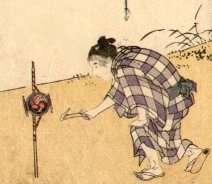 Ges thru Hic |
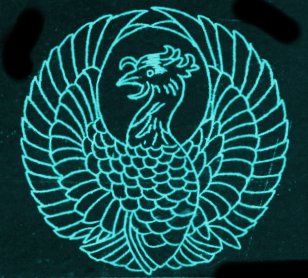 Hil thru Hor |
|
Hos thru I |
J thru Kakure-gasa |
Kōgai thru Kuruma |
Kakure-mino thru Ken'yakurei |
|
Kutsuwa thru Mok |
Mom thru N |
3.jpg) O thru Ri |
Ro thru Seigle |
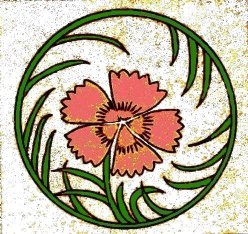 Sekichiku thru Sh |
|
Si thru Tengai |
Tengu thru Tsuzumi |
|
Yakusha thru Z |
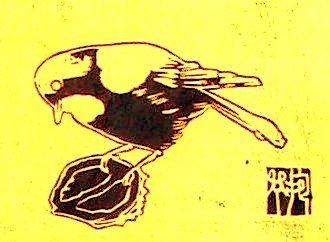
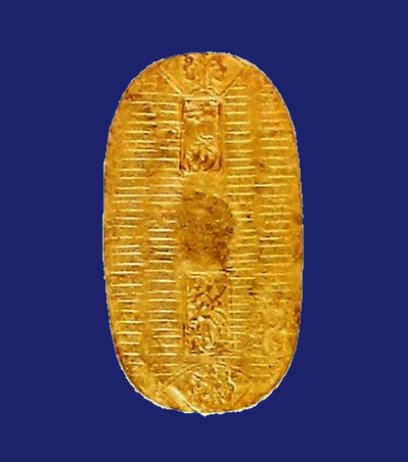
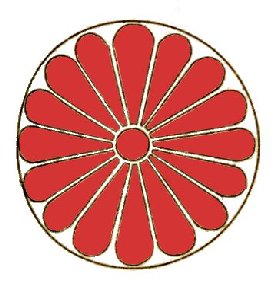
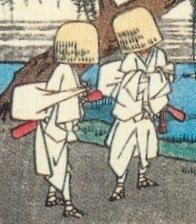

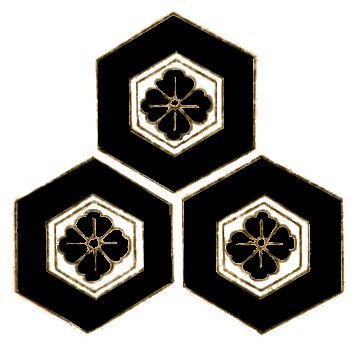
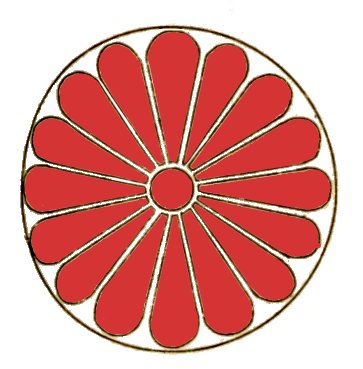
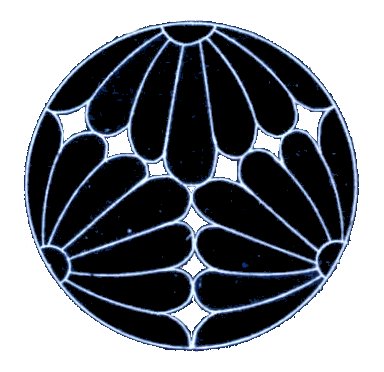
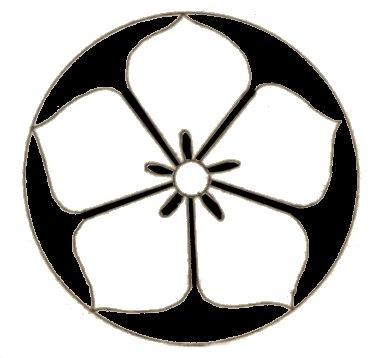
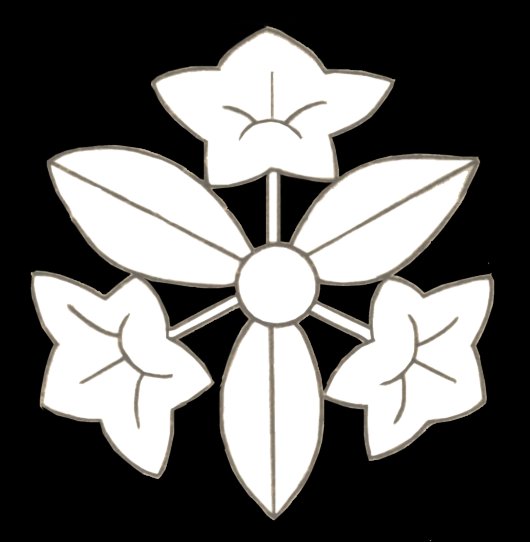
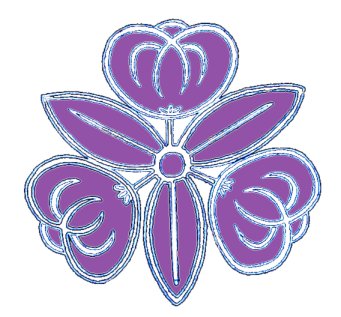
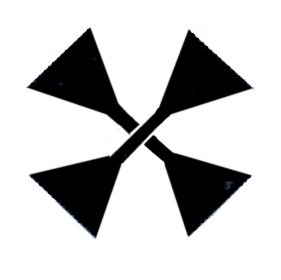
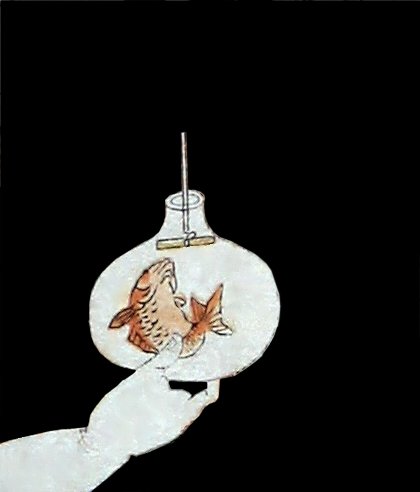
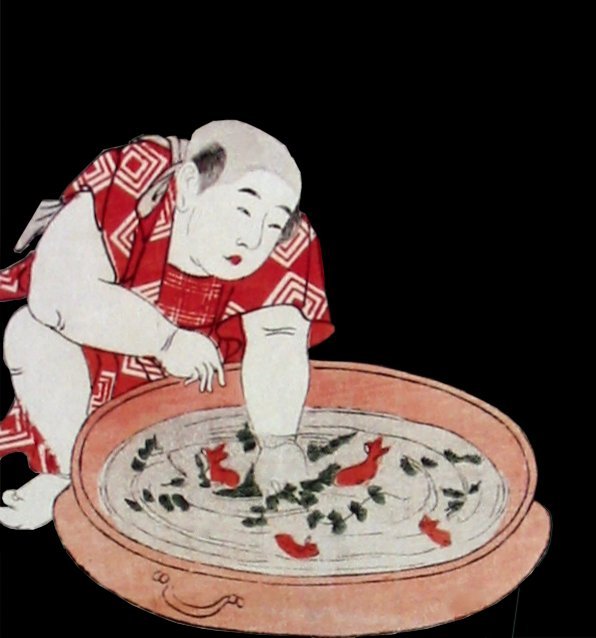
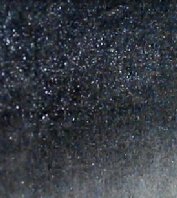
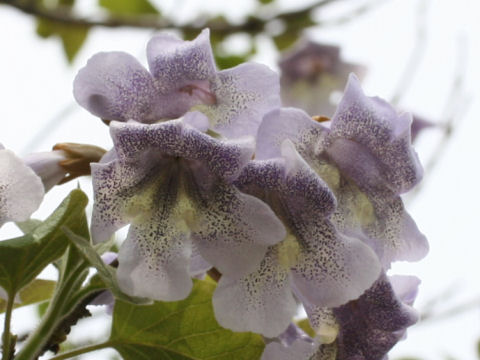
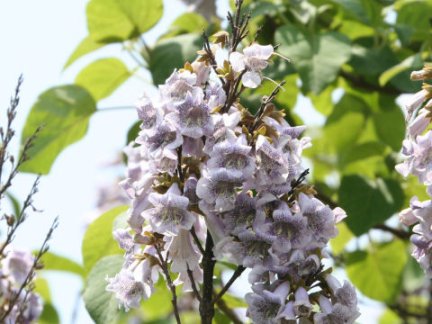
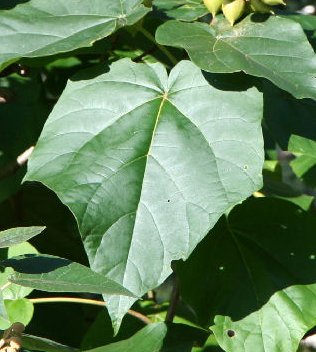
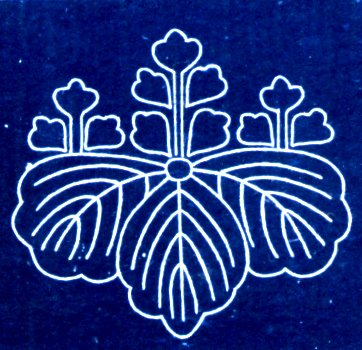
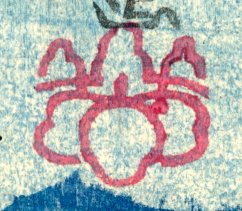

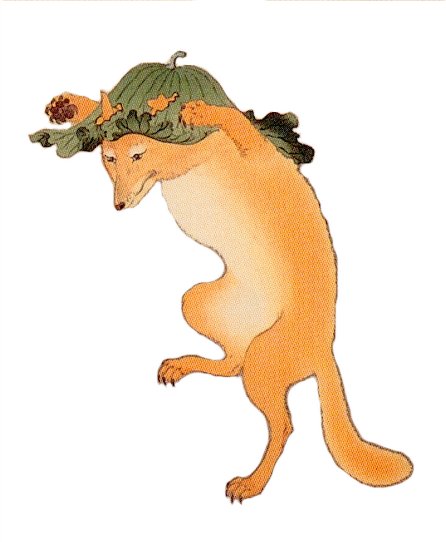
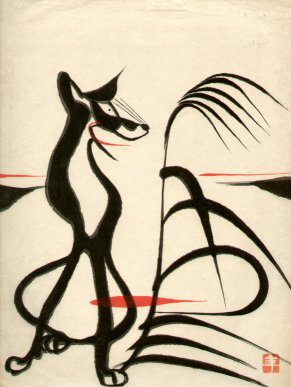

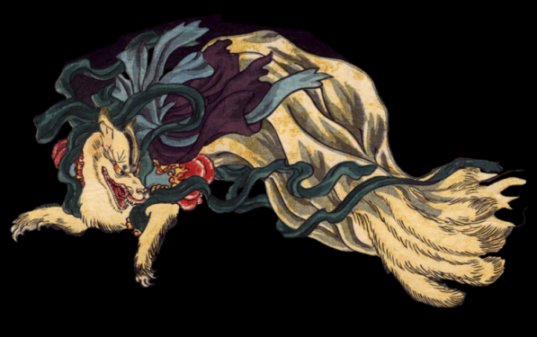
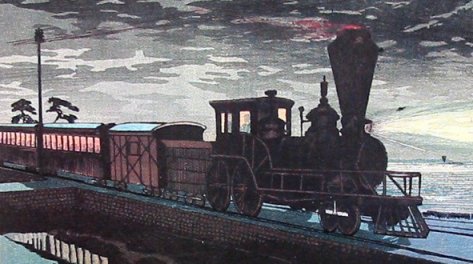
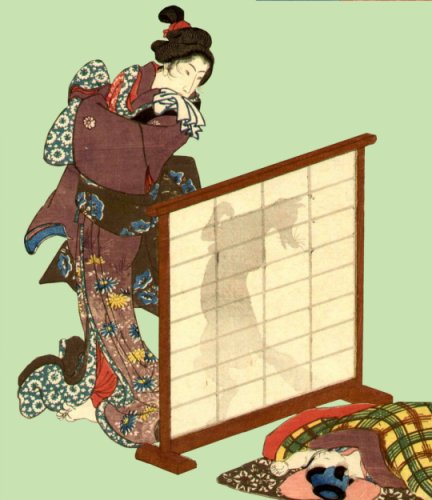
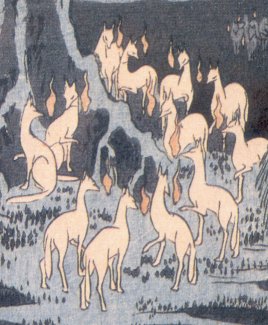
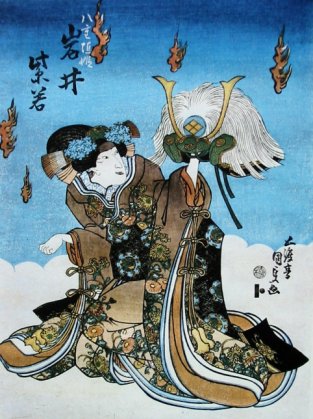

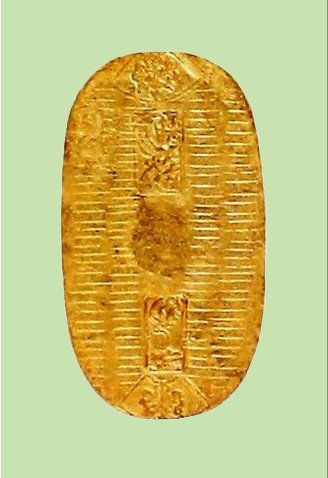
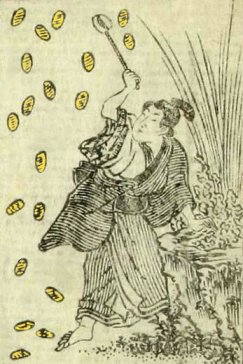
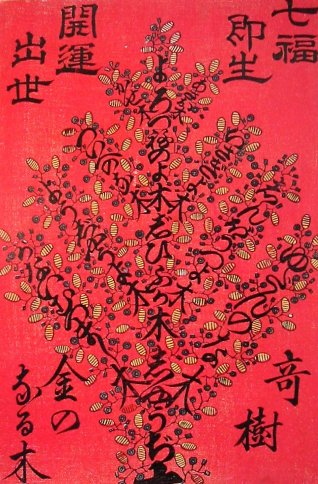
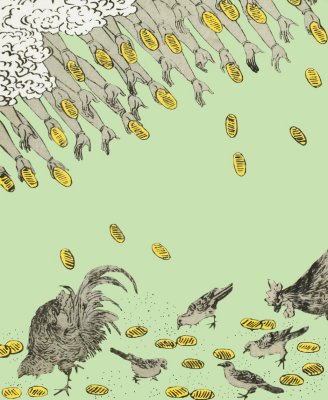
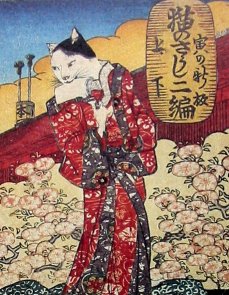
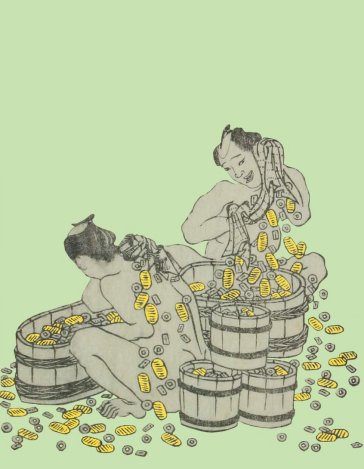
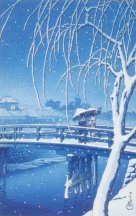
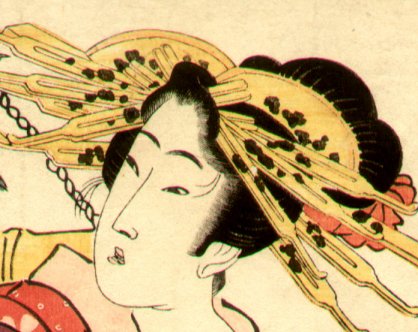



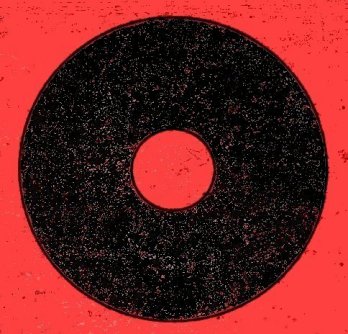
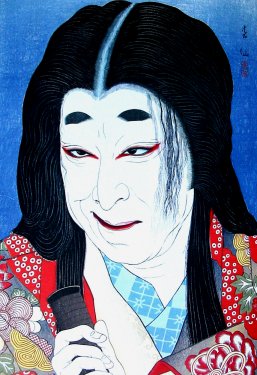
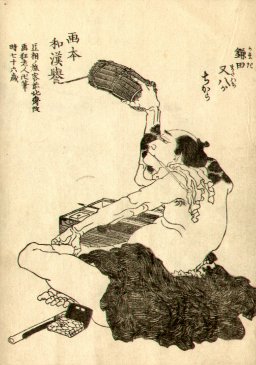
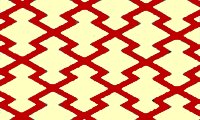
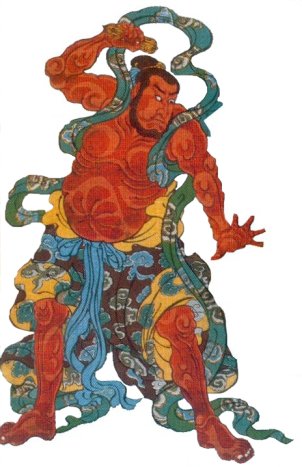
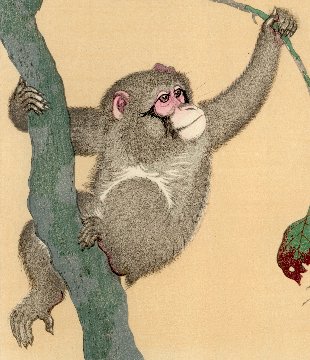
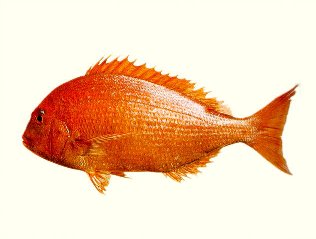
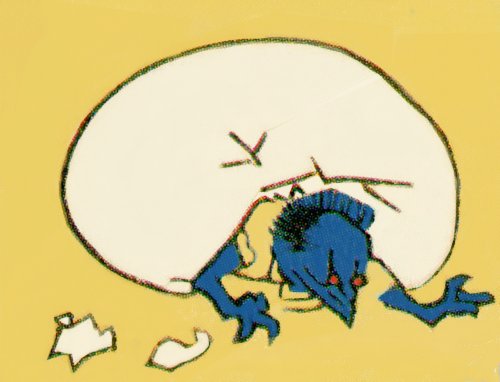
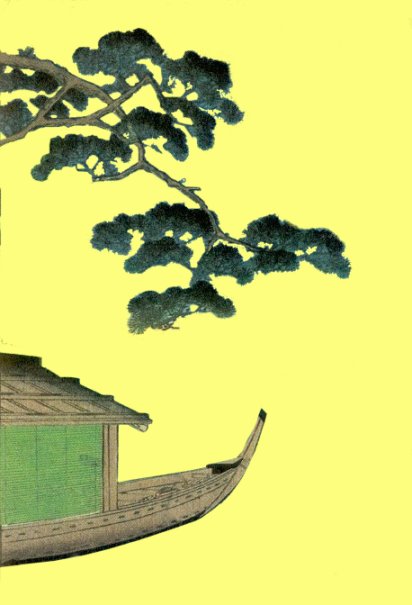
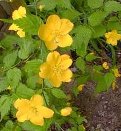
 HOME
HOME